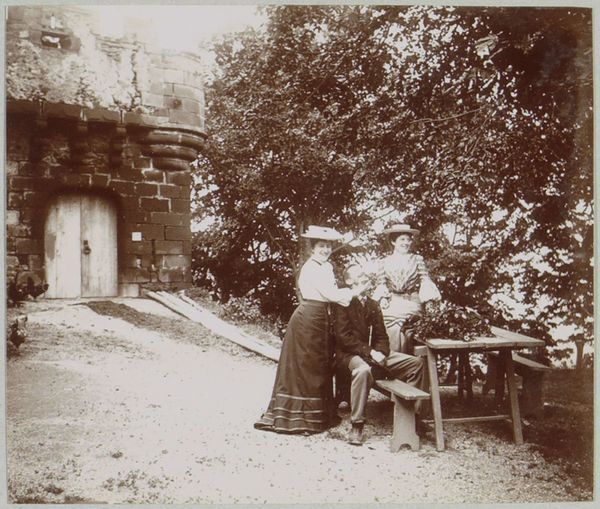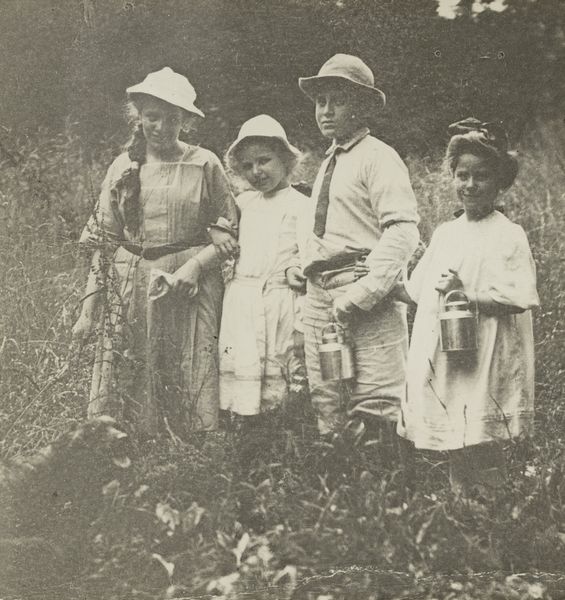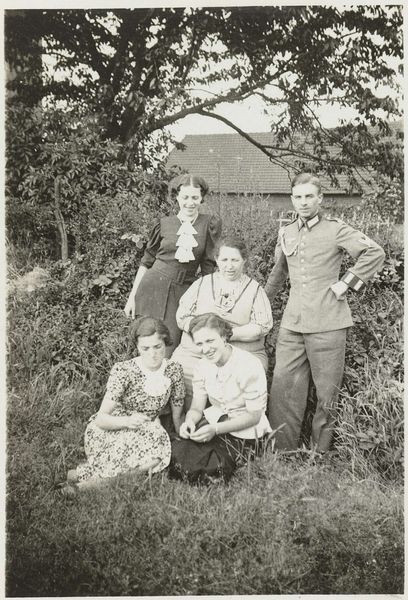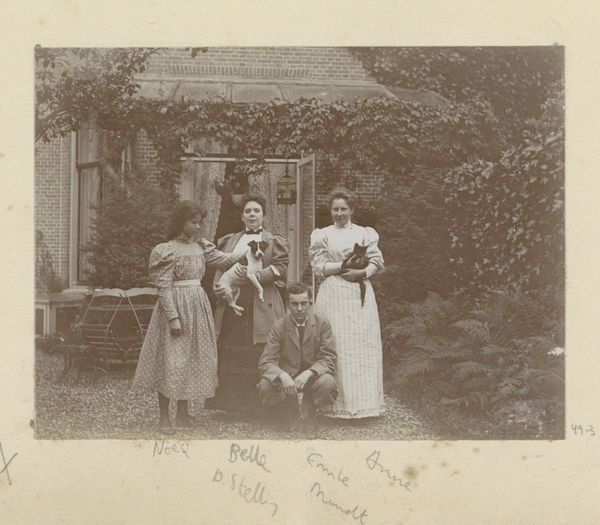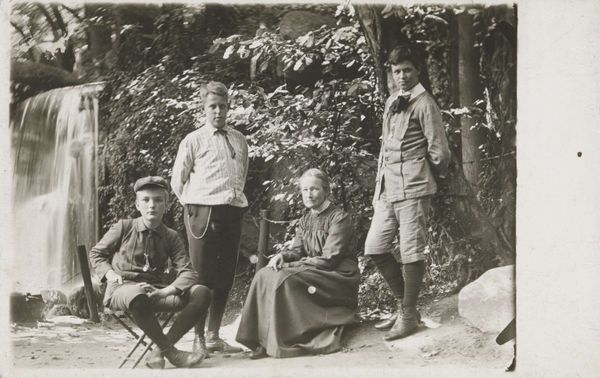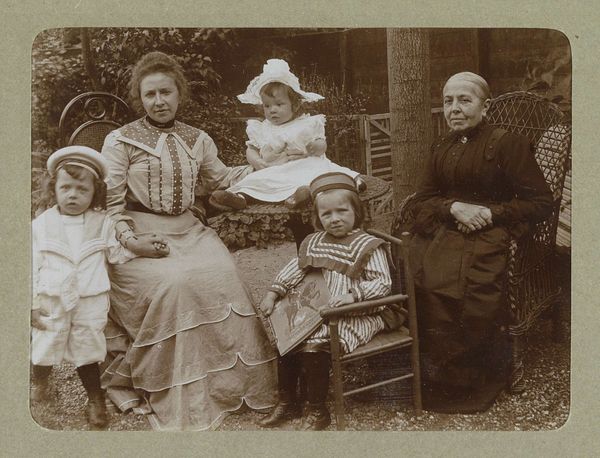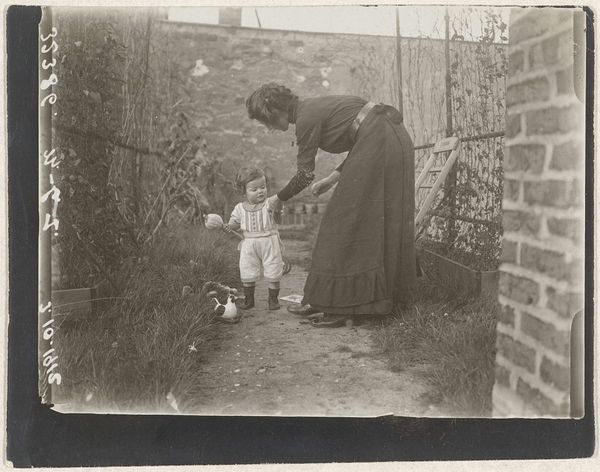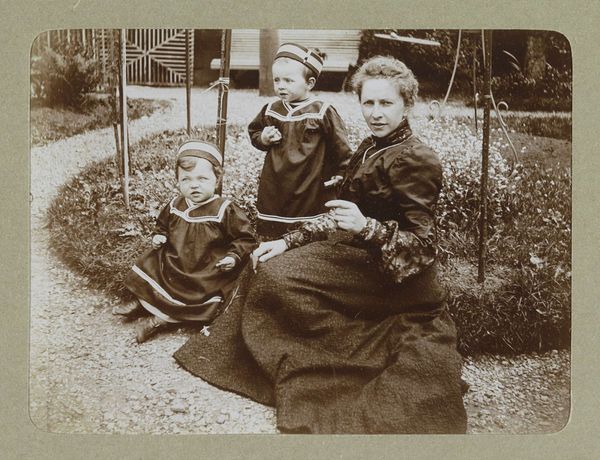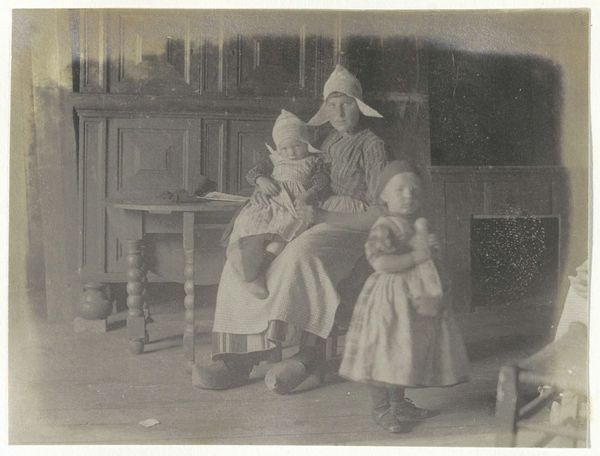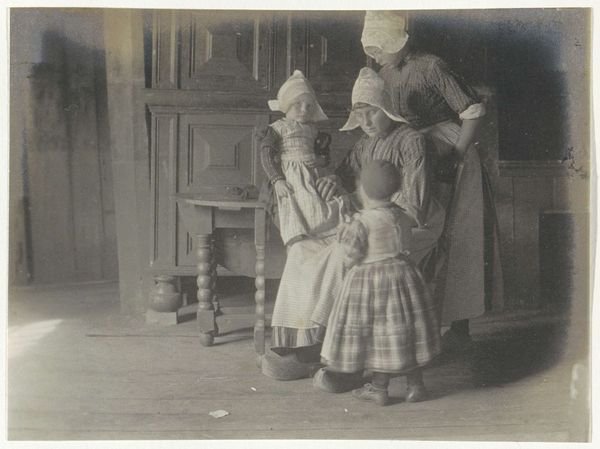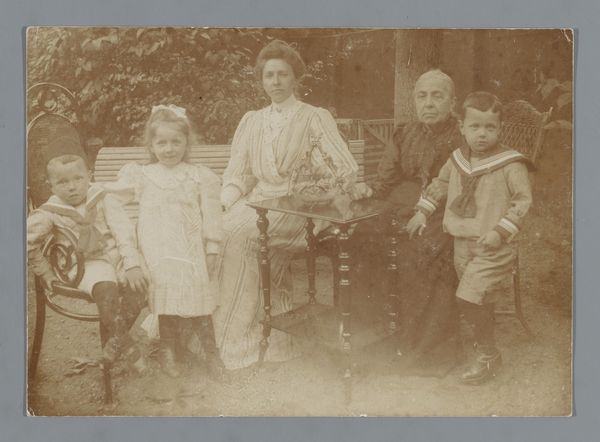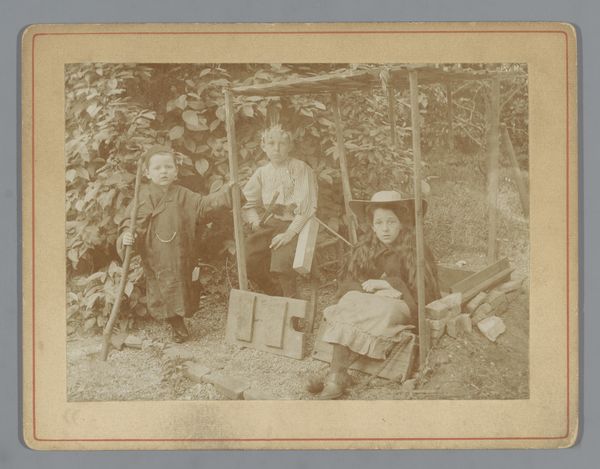
photography, gelatin-silver-print
#
portrait
#
dutch-golden-age
#
landscape
#
photography
#
historical photography
#
old-timey
#
folk-art
#
gelatin-silver-print
#
genre-painting
#
realism
Dimensions: height 168 mm, width 226 mm
Copyright: Rijks Museum: Open Domain
Editor: Here we have Richard Tepe’s "Drie boerenmeisjes in klederdracht in Hierden," a gelatin silver print from around 1900-1930. The image has a quiet stillness, and it makes me wonder about the lives of these young girls. What strikes you when you look at this piece? Curator: It's precisely that "quiet stillness" that I find so compelling. But let's unpack it. This photograph isn't just a quaint depiction of rural life; it's a carefully constructed image that reflects the photographer’s, and perhaps our own, gaze upon these girls. How do you think their traditional clothing plays into our understanding of identity and belonging here? Editor: I guess it presents them as tied to a specific place and community. It emphasizes their cultural background. Curator: Exactly. Think about the historical context. Early photography had the power to freeze a specific time, place, and cultural identity. Tepe’s work often romanticizes the traditional Dutch countryside. This image also skirts the line between preserving cultural heritage and potentially reinforcing stereotypes. Do you feel any tension between these ideas as you look at this image? Editor: I do now. There is something constructed about the scene. The way they are posed, their attire. Curator: And think about who is not represented here: where are the boys, the men, the adults, and elders? We can consider this piece in relation to feminist theories regarding the gaze and the representation of women and children within visual culture. Their expressions don’t offer us insight, as viewers, into what their hopes or dreams may have been. What do we risk losing, when we only consider aesthetics and not social and historical context? Editor: That we end up missing a whole layer of meaning that challenges our initial assumptions. Curator: Precisely. Considering photography through a socio-historical lens challenges the often unexamined perspectives in art history. Editor: That makes a lot of sense. It's a reminder to always consider the social implications of an artwork and not just its surface. Thanks!
Comments
No comments
Be the first to comment and join the conversation on the ultimate creative platform.
